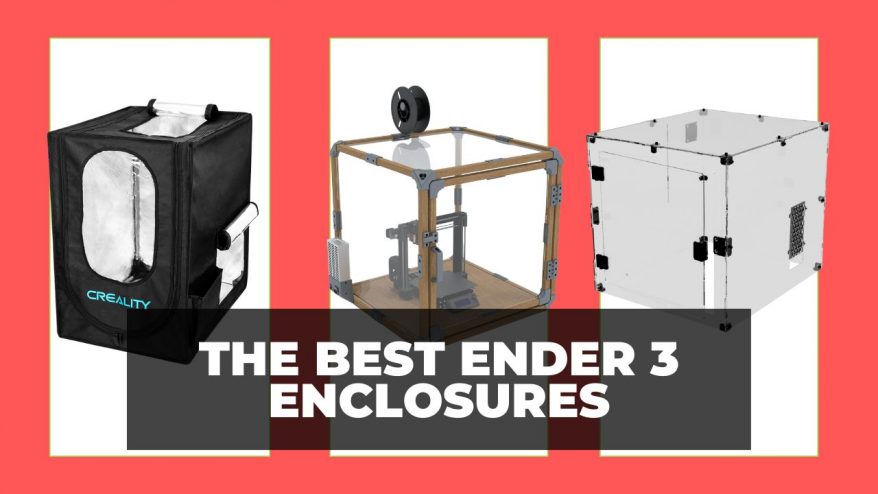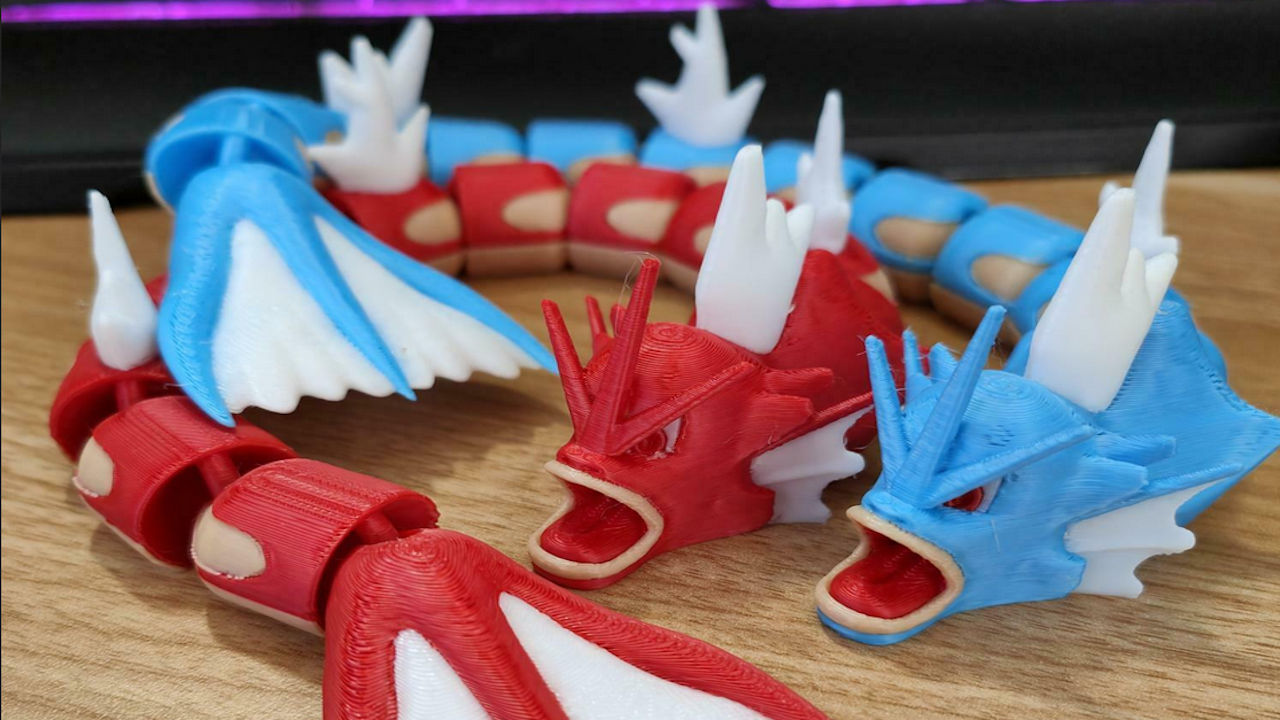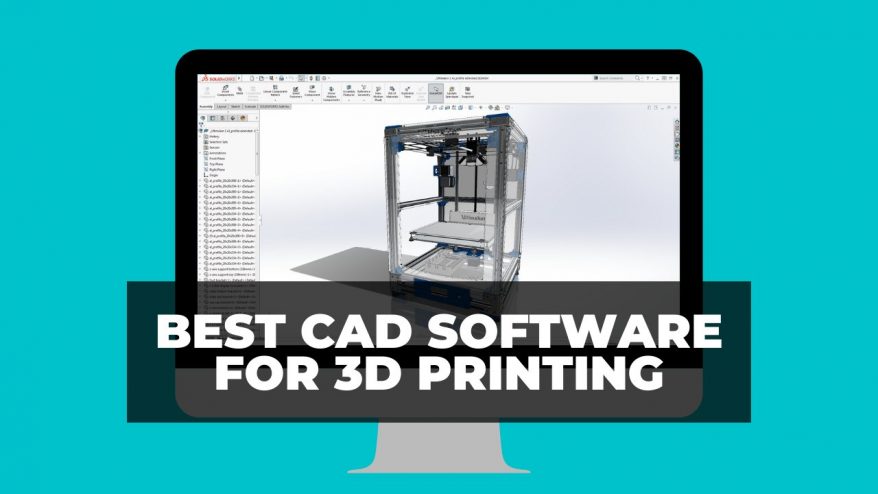
3D Printing Skirt vs Brim vs Raft (Full Comparison)


At 3DSourced we’ve covered everything 3D printing and 3D since 2017. Our team has interviewed the most innovative 3D printing experts, tested and reviewed more than 20 of the most popular 3D printers and 3D scanners to give our honest recommendations, and written more than 500 3D printing guides over the last 5 years.
It’s widely agreed in the 3D printing community that a smooth and correct first layer makes or breaks a print. In most instances, getting that first layer to adhere is 90% of the battle.
Well, you can think of rafts, brims, and skirts as your secret weapons to prevent warping in 3D printing.
Generally, rafts are a touch more reliable for first-layer adhesion, while brims are easier to remove and require less filament to pro
Skirts are another useful tool for leveling the bed (which will help with adhesion), but they don’t physically support the print like rafts and brims do.
In this article, I’ll step you through the best methods I’ve found to use rafts, brims, and skirts to dramatically increase 1st layer reliability.
We’ll also take a look at little-known ways these tools can prevent other printing problems, such as over or under-extrusion and even mid-print cracking.

What is a Raft in 3D Printing?
A 3D printed raft is basically a throwaway horizontal surface that sits under your object, to help with bed adhesion. It’s made up of a predetermined number of layers, with a specific infill percentage, that extends a specific distance away from the sides of your object.
Some materials, like ABS, greatly benefit from the use of a raft. The raft is laid down first to the specified layer depth, then the object is printed on top of the raft.
Don’t worry, a predetermined small distance will exist between the 3D print raft and the object which will aid in the removal of the raft after the object cools. So providing it’s correctly set up for your material (we explain below), popping it off your print later should be easy.
Due to its larger surface area, the raft greatly improves adhesion. It also reduces warping in the object itself, since the edges of the raft are much more likely to warp, leaving the bottom of the object level and square.
A raft can also be used to provide greater stability to objects that have small footprints. It can also give an object a solid foundation. This becomes important when printing larger objects or objects that may tend to be top-heavy.
Rafts can also be used to compensate for any tiny inaccuracies in the build plate calibration or even out warped heatbeds, scratches, or dents.

Here are some terms that you may want to adjust in your 3D slicer when 3D printing rafts to get better results, or just use less filament:
- Separation Distance – This setting is perhaps the most important, it determines the height of the space between the top of the raft and the bottom of your print. It’s a balance between ensuring the print is close enough that it adheres to the raft when the print begins and there’s enough air gap to ensure easy removal once the print is finished. Usually 0.1mm is enough, but this may want to be increased with more flexible materials.
- Above Raft Speed – This is the speed at which the first layer is printed on top of the raft. This layer wants to be slow to aid adhesion.
- Raft Top Layers – This is how many layers on the top of your raft. These will be the surface the bottom of your print will rest on. So you’ll need 2-3 layers to ensure a smooth surface. Increase the layers if you’re getting pillowing on the bottom of your print.
- Raft Base Layer – These are the first, thick, and slow-printed layers on the base of the raft. It’s important these adhere correctly or the rest of the print likely won’t work.
It should be noted that some FDM printers always need to use rafts, while others may never need them. For example, Zortrax printers use a perforated heated build plate. Because the build plate is perforated, a raft must be used every time an object is printed.
On the other hand, printers with solid heated plates can greatly reduce the need for rafting, since the higher temperatures of the build plate surface can improve adhesion significantly with a corresponding reduction in warping.
Cons of Using Rafts
Rafts can be hard to remove
Some of the cons of using rafts are that in some slicer settings, they can be hard to remove (some more flexible materials can be harder to ‘pop’ away) and that the bottom won’t be that super smooth, glass-like surface you’ll get when printing straight onto the bed surface.
Thrown away after use
And of course, it can upsetting to have to print a raft, that’ll be disposed of straight after use using good filament. But you’ve got to remember, without the raft in some instances that print may have been destined for the rubbish anyway.
3D printing raft removal is best done using similar tools you’d use to get the print off of the bed in the first place.
How to Remove a Raft From 3D print
Place a thin scraper or wide knife between the base of your print and gently ease up that side, away from the raft. Once one edge of the raft has come away, it’s easier to remove the rest.
Occasionally you may need some 400 grit sandpaper to smooth off the base, if you had a harder time removing the 3D printer raft.
In some instances people find that they can only get a print to stick to the bed when using a raft and not when just printing directly onto the surface. This could be because your default settings for the raft are a slower, thicker first layer with the fans off.
If this is the case, when trying to print without a raft, you may want to try mimic the settings on that first raft layer to aid adhesion.
Wondering the differences between a 3D printing raft vs brim? Read on to find out more.

What is a 3D Printing Brim or ‘Sidewalk’?
Think of a brim as a close relative of a raft. As was discussed above, a raft is a stabilizing base that extends completely under a printed object to improve adhesion.
A brim, on the other hand, only extends outward from the perimeter of an object, it has no contact with the object’s underside. So what is a brim in 3D printing? Well, think of the brim of a hat and you’ve got the right idea.
3D printing brim vs raft
Both rafts and brims help with adhesion and both can be used to stabilize objects that have very small contact points with the print surface. However, for smaller or more delicate objects, a brim may be preferable to a raft due to the fact that its only contact with an object is along the outside edge in a very thin layer.
Some materials require brims more than others. For example, ABS can warp if you’re not using the correct printing settings or bed surface (or just using cheap ABS). So it may be worth it to 3D print brim around ABS parts to aid adhesion.

Read more: the best ABS 3D printers
More so on support structures, that tend to be narrower and have a low surface area on the bed. These can easily pop off the bed, so it’s wise to print supports with brims, just in case.
This is especially true when using a low adhesion support like our Break Away. As the name suggests, it’s formulated to easily snap off your model after printing, leaving a smooth finish under the model and mess of dissolving like you’d need to with PVA or HIPS soluble supports.
This means that removing a brim from this type of object will be easier than removing a raft. This, in turn, means that there is less chance of damaging your smaller object during the removal process. Worth knowing when considering brim 3D printing.
Then again you may just want to sand off the base of the print, if there are any rough sections left over. A deburring tool is also a great way to remove brims.
What is a 3D Printing Skirt?

Skirts are the most common, it’s likely your slicer adds a Skirt to the beginning of each print. A 3D print skirt is nothing more than a brim that doesn’t touch the edges of the object that you’re printing.
Skirts have a couple of uses and are usually just a couple of layers thick. First, they are an excellent way to get a preview of how your equipment is working and how a material is flowing – it’s easy to ensure the material is extruding nicely and laying on the bed correctly before the actual printing of your model starts.
You simply run a skirt that’s only a few outlines wide at a relatively low print speed so that you can get a good look at what’s going on. If the skirt prints cleanly, then you let the print continue. If it doesn’t, you can abort the print and make the necessary adjustments, saving you both time and money.
Skirts can also be useful as thermal barriers. One way is printing them wide over the bed, to insulate it and keep the temp up where your print it.
Or alternatively let’s say that you want to insulate the object that you’re printing from temperature variations caused by room drafts.

For example, printing UV resistant ASA filament (like ABS) is very sensitive to cooling too quickly, and can crack when printing in a drafty environment. The height of the skirt can be adjusted so that it is as tall as your object. The skirt protects the object from drafts, insuring even cooling during printing.
When used this way they can be called a draft / draught shield.
Finally, if your printer has dual extruders, you can use a skirt as tall as your object to prevent stringing and blobbing. The skirt catches any material that may be oozing from the secondary extruder before it moves to the main object. When used this way, they’re referred to as an ooze shield.
Rafts, brims and skirts are an easy way to get better results when you print. Yes, you do use more filament when you print a raft, brim or skirt. You also use more filament when you have to scrap a print job due to a problem that a raft, brim or skirt could prevent.
In short, a couple of ounces of prevention, in the form of a raft brim or skirt, is a good bet when it comes to getting great results from your printing efforts.
Related articles:




















